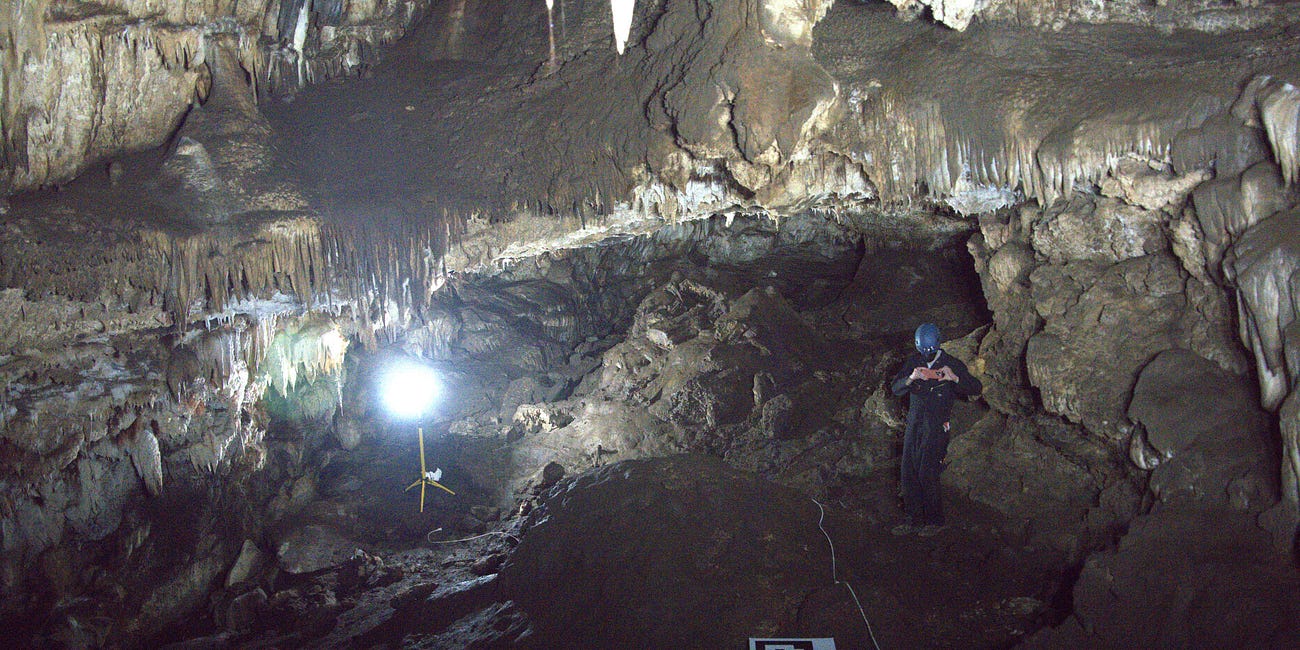Depth
The measurement or distance downwards or inwards
Welcome back to The Overview! Happy summer solstice — the longest day of the year in the Northern Hemisphere ☀️
As the school year winds down and summer kicks into full swing, we’ve got an exciting edition for you. This week, we’re diving into vertical landings, underground caves, and more:
🚀 A successful demonstration of a vertically landing rocket by Japanese automaker Honda’s R&D division, a first outside the US and China
🪐 ICYMI: Join Stanford PhD student and our very own Isaac Ward on what caves can teach us about the cosmos
👋 Also, if you haven’t joined The Overview Discord, we’d love to see you there! Come chat about the latest happenings in aerospace, emerging technologies, and help shape what we explore next:
🚀 Aerospace News
It’s been a while since we last looked at the news, and it is safe to say that a lot of things have happened in the last few weeks. But let’s focus on this past week. On one hand, we’ve got new, exciting undertakings from old players. On the other hand, a continued reminder that spaceflight is hard.
Honda succeeds in landing a rocket prototype
Source: Ars Technica
Honda just tested an experimental rocket capable of vertical landing! The video shows an incredibly stable vehicle that performs a hop to 900 feet in altitude and comes back to land at the landing pad. This would be a first-stage booster of a rocket, with grid fins for aerodynamic control similar to that of SpaceX’s Falcon 9’s booster stage.
Although the rocket is a small technology demonstrator and not an operational vehicle, it shows a key development: it is the first showing of a vertical take-off and landing capable vehicle outside of the US (SpaceX, Blue Origin, and Stoke) and China (LandSat) (Note that there was also a successful demonstration by a student team Gruyere Space Program in Switzerland).
SpaceX is the only company that has been able to make commercial use of orbital reusable rockets so far, so it will be interesting to see where Honda goes from here. A surprising showcase!
Starship Woes Continue
It’s been a difficult year for the Starship program. Since the introduction of Ship V2 on flight test 7 in January, SpaceX has been unable to recreate the successes of the first few test flights (especially those of flights 5 and 6 in terms of ship recovery). Flight tests 7 and 8 both had failures during the ascent post-stage separation, and although flight 9 managed to get further, it lost an engine and control authority while in space on its suborbital trajectory.
On Wednesday evening, these troubles continued with an unexpected failure while Ship 36, the Starship upper-stage meant to fly for flight test 10, exploded while preparing for a static fire test. Based on a tweet from Elon, this was most likely due to a COPV in the payload bay failing below its rated pressure. The result? Likely delays in the next test flight and the Starship program.
⛏️ Featured Technology
The Airspace Beneath Our Feet
I’ve found that the allure of aerospace (for most) lies in the open sky or the expanse of space. When aerospace engineers close their eyes, their minds generally travel upward, ignoring an entire frontier that lives right beneath our feet: subterranean environments.
Aerospace engineering often reaches for the skies… but what if part of the next frontier is right beneath our feet?
In his latest article, Isaac Ward from The Overview explores how cutting-edge aerospace technologies are transforming our ability to navigate and understand subterranean spaces. From collapsed mines to lava tubes, these underground environments present extreme challenges that demand autonomous, adaptable, and resilient systems. Come learn about:
Search and rescue in GPS-denied, high-risk spaces that are too dangerous for human teams 🚑
DARPA’s SubT Challenge, where robotic teams competed to explore and map complex cave systems 🗺️
Scientific discovery in remote or culturally significant underground sites 🔍
Testing grounds for space, using Earth’s caves as analogs for Moon and Mars exploration 🛸
And don’t worry—no cave diving required. Isaac keeps things light, fascinating, and accessible (even for the mildly claustrophobic). So dive into the full article below! You just might find aerospace’s next big leap is straight down.
💬 Quote of the Week
As we explore the depths this week, from underground caves to the foundational challenges of rocket development, we’re reminded that breakthroughs often emerge from the toughest moments:
“In the depths of winter, I finally learned that there was in me an invincible summer.”
― Albert Camus, Summer
Thanks for joining us for The Overview — The Depth Edition.
Today marks the summer solstice (June 20), the longest day of the year. We hope you are soaking up the sunshine. See you on Discord! 🌞
If you enjoyed this edition, share The Overview with a friend or colleague who’s passionate about making aerospace an inclusive and welcoming community. Got any thoughts, questions, or topic requests? We’d love to hear from you — feel free to reach out at admin@theoverview.org!
Stellar vibes,
Tagg, Anshuk, Maggie, Isaac



